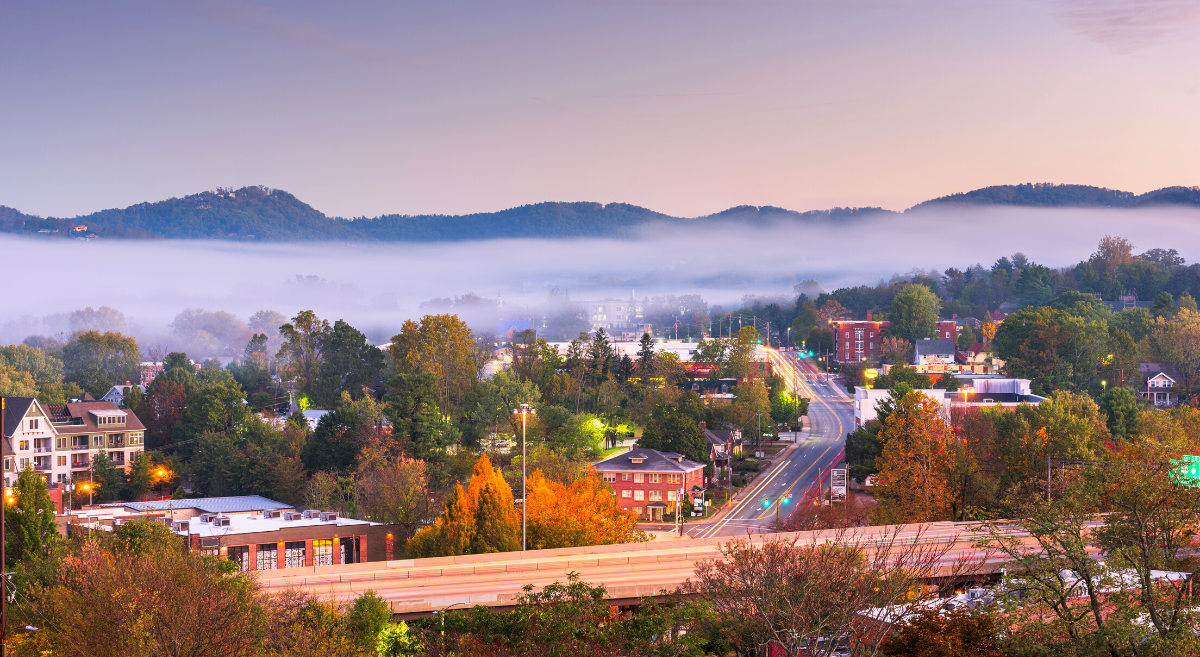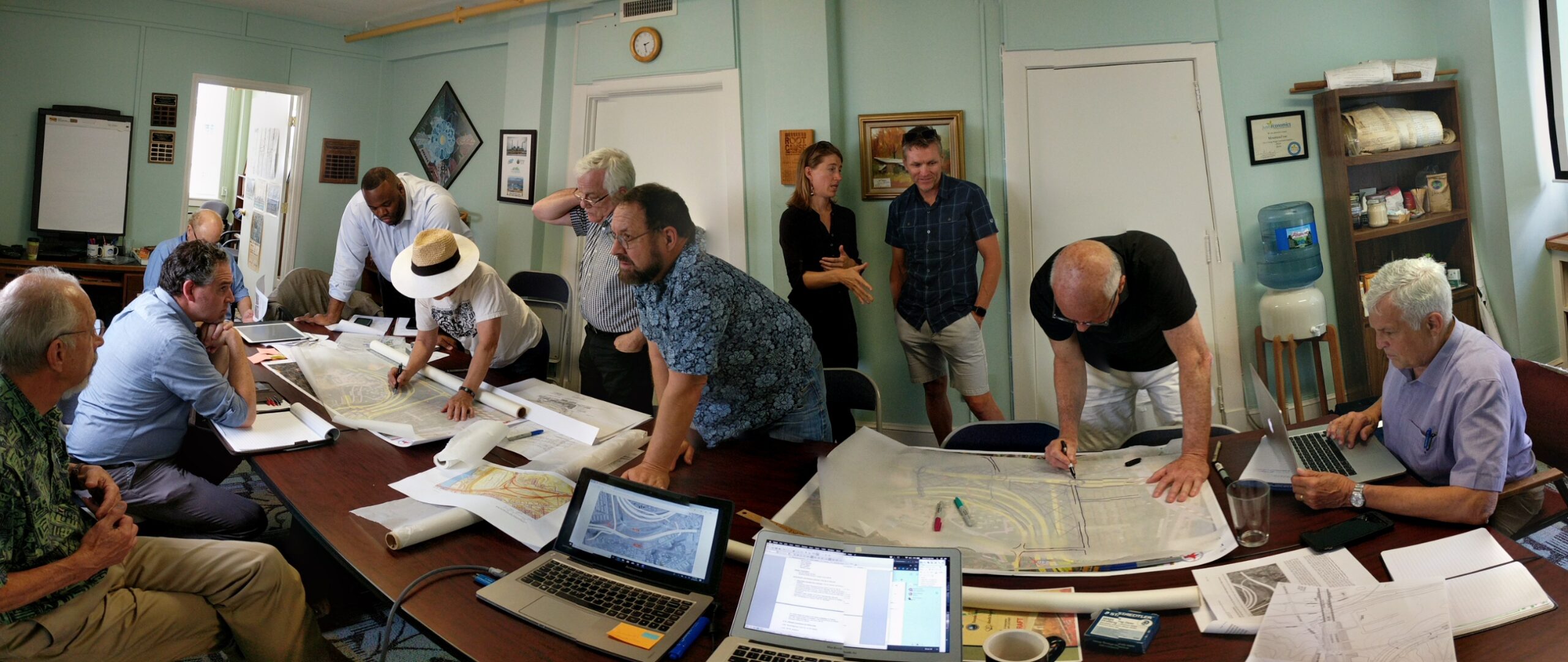When Communities Come Together, We Can Move a Highway

After over 30 years of wrangling, the I-26 Connector project is finally slated to begin construction in 2023.
By Chris Joyell, MountainTrue Healthy Communities Director
The current I-26 design will look much different than what was originally proposed, thanks to the work of the MountainTrue and the Asheville Design Center. When the North Carolina Department of Transportation (NCDOT) first proposed the Connector Project in 1989, it sparked widespread concern among Asheville residents living within its path. Typical of NCDOT projects at the time, the project catered to thru-traffic drivers and not to the needs of the people and neighborhoods of Asheville itself. If left unchallenged, it would have been overbuilt and threatened communities already harmed by previous highway projects.
In 2000, the community started organizing in earnest to oppose the plan. MountainTrue (then the Western North Carolina Alliance) co-chaired the Community Coordinating Committee (CCC), which issued a report recommending nine key design goals that the final project should achieve. These included separation of local and interstate traffic, matching the scale of the project to the character of community, reunification and connectivity of community, and minimization of neighborhood and local business impacts. These goals have continued to be the foundation for advocacy by residents and the City of Asheville ever since.

Pictured above: An Asheville Design Center-led I-26 design charette held in the MountainTrue office in 2006.
Then in 2006, the Asheville section of the American Institute of Architects (AIA) secured grant funding to form the Asheville Design Center. This allowed the Center to begin holding community meetings, workshops, and design charrettes to create a community-authored design for I-26 that met the CCC’s goals. Eventually called Alternative 4B, this design was finished in 2007 and received broad community support, including funding from the City of Asheville and Buncombe County for an engineering study to prove that it was feasible.
In 2009, NCDOT committed to including a revised version of the community-designed Alternative 4B in the Environmental Impact Statement (EIS) – the first time anywhere in the country that a community-developed design became a viable alternative for a major highway project. Also in 2009, a coalition of representatives from the Asheville neighborhoods that stood to be most impacted by the new highway – including West Asheville, Burton Street, WECAN, Emma, and Montford – formed the I-26 ConnectUs Project. MountainTrue served as the convener and coordinator, using its expertise to amplify neighborhood concerns with NCDOT. The ConnectUs Project also adopted the CCC report’s goals as the basis for its advocacy.
In 2013, the I-26 Working Group came together and was made up of elected City and County officials, a representative of the business community, and MountainTrue as a representative of the ConnectUs Project. The Working Group secured consensus on several important issues, including that NCDOT should analyze the possibility of having fewer lanes through West Asheville and honor the City’s vision for the Jeff Bowen Bridge to become an urban boulevard. This effort also resulted in NCDOT committing to build a multi-use path from Haywood Road in West Asheville to and across the Bowen Bridge – a significant victory for community connectivity.
When NCDOT issued a revised Draft EIS in 2015, Asheville City Council passed a resolution in support of the community’s vision and formed a working group with NCDOT to hammer out the remaining issues. In 2016, NCDOT selected Alt. 4B as the preferred alternative for the project and, in 2017, NCDOT agreed that the highway in West Asheville would be six rather than eight lanes. That same year, the Asheville Design Center merged with MountainTrue, sharpening the organization’s focus on the built environment.
More recently, MountainTrue has worked to ensure that the land between Clingman Avenue and the Bowen Bridge — currently owned by NCDOT — gets returned to the city for redevelopment. Our aim is to extend Patton Avenue all the way to the Bowen Bridge, providing infill opportunities that can address our housing shortage, while also connecting downtown to the French Broad River and the Wilma Dykeman Riverway. In addition, we can realize new north-south connections between the Montford and WECAN neighborhoods, and provide the Hillcrest Apartments with a direct connection to Patton Avenue transit options.
Good transportation planning considers a community’s unique context and engages residents from the beginning. It should protect our most vulnerable neighborhoods, ecologically sensitive areas, and mountain views while minimizing the impacts on homes, businesses, and special community assets. Good transportation planning can improve quality of life, increase transportation options, make our communities healthier, and reduce pollution.
In the coming years, we will see how these principles play out on the ground, and we will continue to advocate for an I-26 Connector that serves the people who live in, work in, and visit our city.

